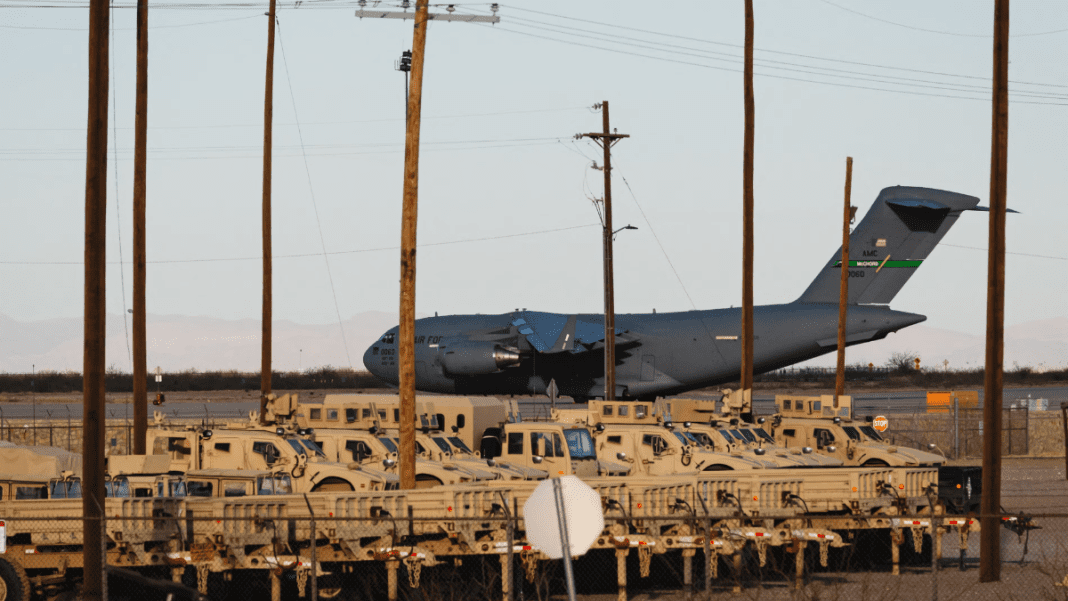The Trump administration is reportedly directing $10 billion through the U.S. Navy to speed up the building of new migrant detention centers across the United States. According to reports, construction on these new facilities could start as soon as next month.
This large-scale operation is part of a wider government effort led by the Department of Homeland Security (DHS) to increase space for detaining migrants caught crossing the southern border. DHS is said to be using the U.S. Navy to manage contracts for the construction and upkeep of these facilities.
Each detention center could hold up to 10,000 people, making them among the largest such facilities in the country. The proposed sites include several states such as Georgia, Indiana, Kansas, Louisiana, and Pennsylvania.
Government insiders say the administration involved the Navy because the military has strong experience in logistics, large-scale construction, and rapid deployment projects. The move also comes after a rise in immigration arrests, leading officials at Immigration and Customs Enforcement (ICE) to look for fast solutions to house the growing number of detainees.
Military Role in Immigration Detention Expands
Publicly available documents from mid-2025 show that the U.S. Navy may be required to provide infrastructure, staffing, services, and supplies for detaining migrants under DHS and ICE. This coordination between a military branch and immigration authorities highlights the growing role of the U.S. armed forces in domestic border and detention operations.
Officials expect the facilities to be “soft-sided” tent complexes, similar to those already set up at the Fort Bliss Army base in Texas. These temporary structures can quickly house thousands of people at a time.
However, such centers have faced criticism in the past. Reports from existing facilities describe issues such as poor sanitation, limited medical care, and overcrowding. Federal inspectors and detainees have pointed to problems with plumbing, medical neglect, and restricted access to legal support.
Despite these challenges, officials continue to expand the use of military installations and resources to meet rising detention needs. Officials see the Navy’s involvement as a way to accelerate construction timelines and centralize control over massive contracts. These contracts would otherwise take months or even years to process through traditional civilian channels.
Experts, including Todd Harrison, a senior fellow at the American Enterprise Institute, note that the U.S. military manages large projects on short notice, often in emergency or overseas environments. Applying that capacity domestically allows the government to build large detention centers faster than would normally be possible through civilian agencies alone.
Record Budget for Immigration Enforcement
Earlier this year, the administration’s spending plan, known as the “One Big, Beautiful Bill,” set aside an unprecedented $45 billion for ICE to expand immigration enforcement and detention operations. This marks one of the largest budget increases in the agency’s history.
Idaho horse racing arena raided by FBI and ICE—families stunned as 50+ detained
Federal records show that ICE contracts have steadily grown since Trump’s first term, rising from about $137 million in 2016 to more than $460 million in 2025. Much of this funding has gone toward construction, transportation, and management of detention centers nationwide.
As of the end of September, official data show that ICE holds nearly 60,000 people in custody. Officials expect this number to increase rapidly as new facilities come online. Internal planning documents reviewed by several media outlets suggest the administration aims to boost detention capacity to over 100,000 by early 2026.
Homeland Security officials are working under tight deadlines. They are finalizing construction contracts and starting groundwork before the end of the year. The goal is to make new detention space available quickly. This is to handle the rising number of border detentions.
It is unclear whether the new centers will be built on existing Navy property or on newly acquired land. The plan shows how the military’s logistical strength is supporting domestic immigration enforcement. This level of involvement has not been seen before.
The reallocation of $10 billion through the Navy is one of the largest direct military involvements in U.S. migrant detention efforts. It signals a major expansion of the federal government’s approach to immigration control.

